Abstract
Continuously thermophilic composting was examined with a 4.5-liter reactor placed in an incubator maintained at representative temperatures. Feed was a mixture of dried table scraps and shredded newspaper wetted to 55% moisture. One run at 49 degrees C (run A) employed a 1:4 feed-to-compost ratio, while the other runs used a 10:1 ratio and were incubated at 50, 55, 60, or 65 degrees C. Due to self-heating, internal temperatures of the composting mass were 0 to 7 degrees C hotter than the incubator. Two full-scale composting plants (at Altoona, Pa., and Leicester, England) were also examined. Plate counts per gram (dry weight) on Trypticase soy broth (BBL Microbiology Systems) with 2% agar ranged from 0.7 X 10(9) to 5.3 X 10(9) for laboratory composting and 0.02 X 10(9) to 7.4 X 10(9) for field composting. Fifteen taxa were isolated, including 10 of genus Bacillus, which dominated all samples except that from run A. Species diversity decreased markedly in laboratory composting at 60 degrees C and above, but was similar for the three runs incubated at 49, 50, and 55 degrees C. The maximum desirable composting temperature based on species diversity is thus 60 degrees C, the same as that previously recommended based on measures of the rate of decomposition.
Full text
PDF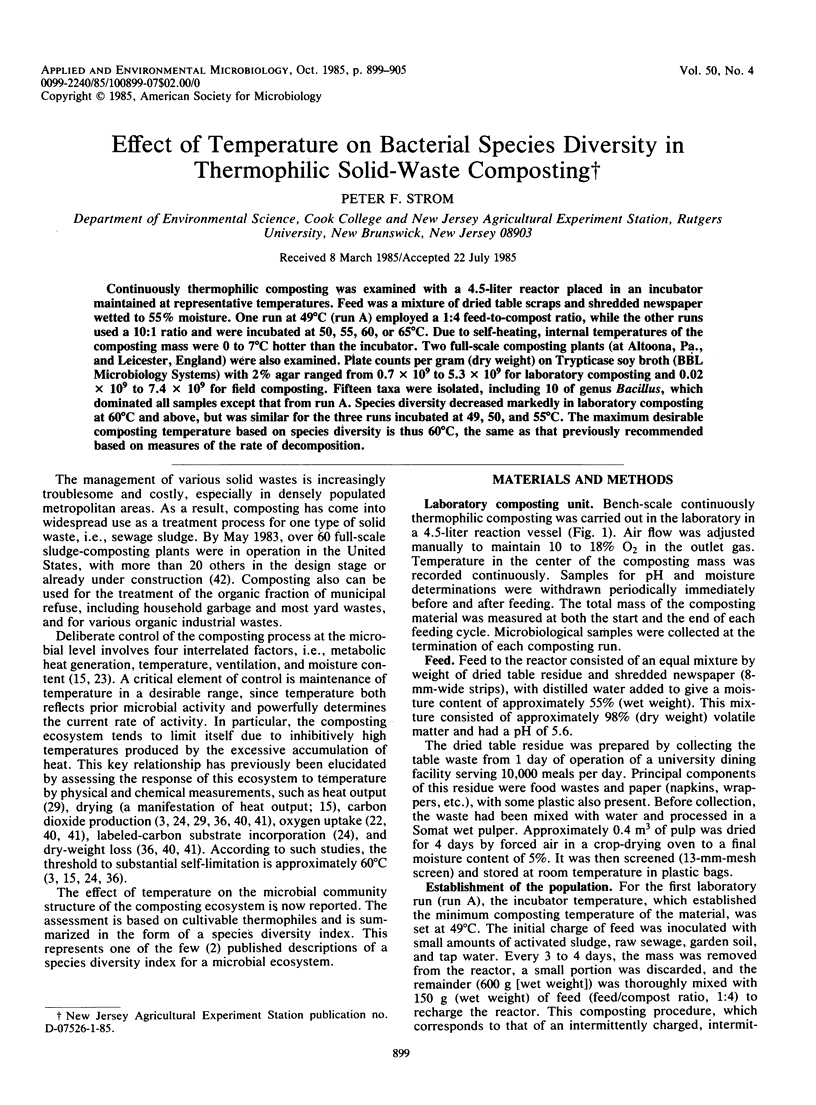
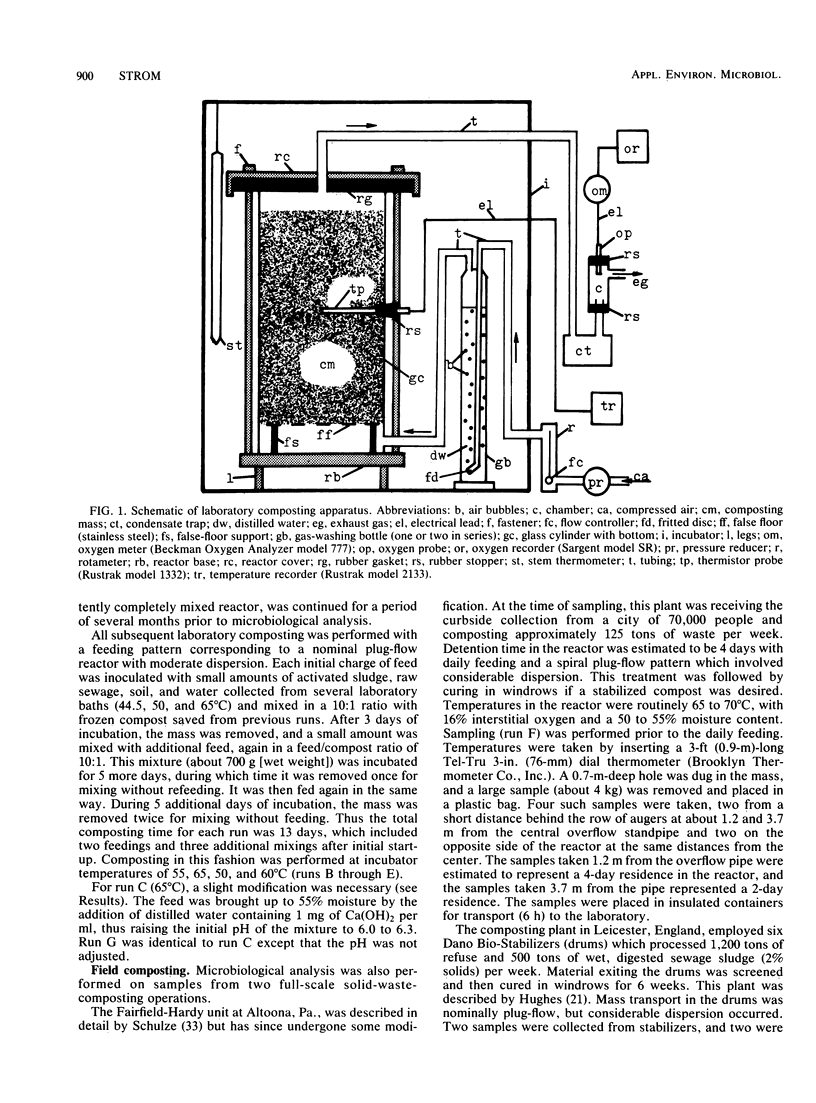
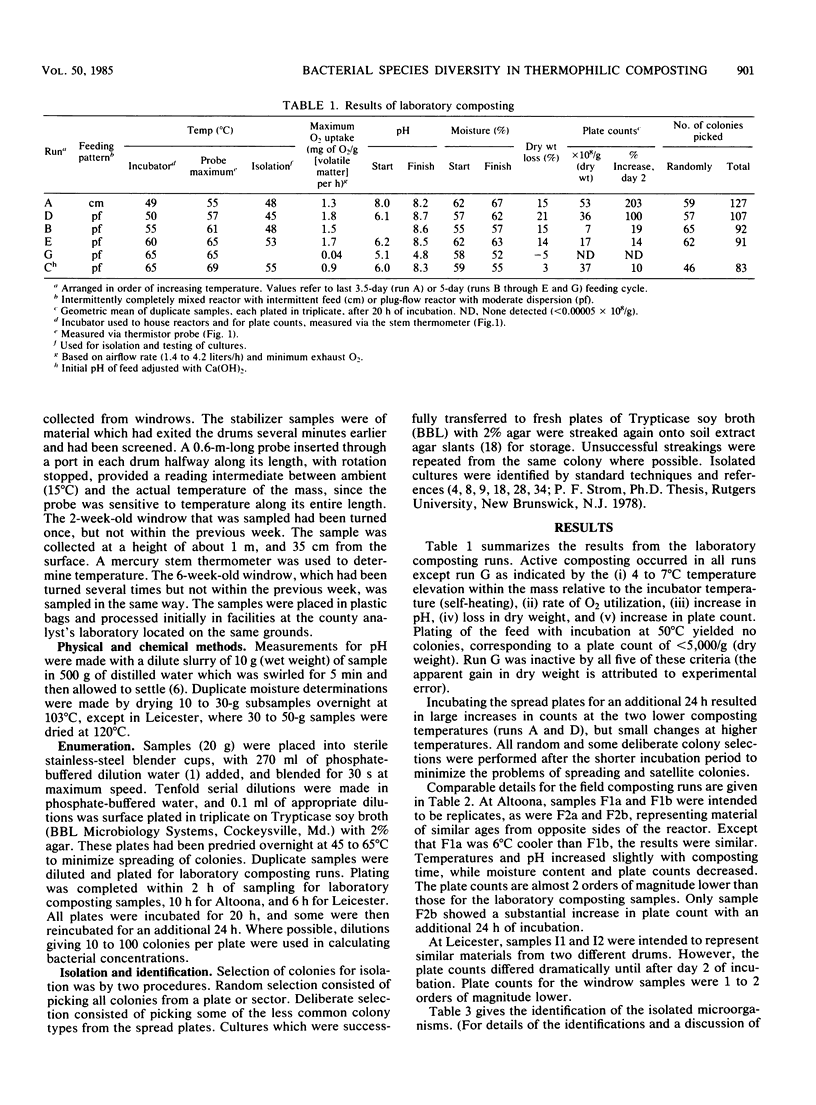
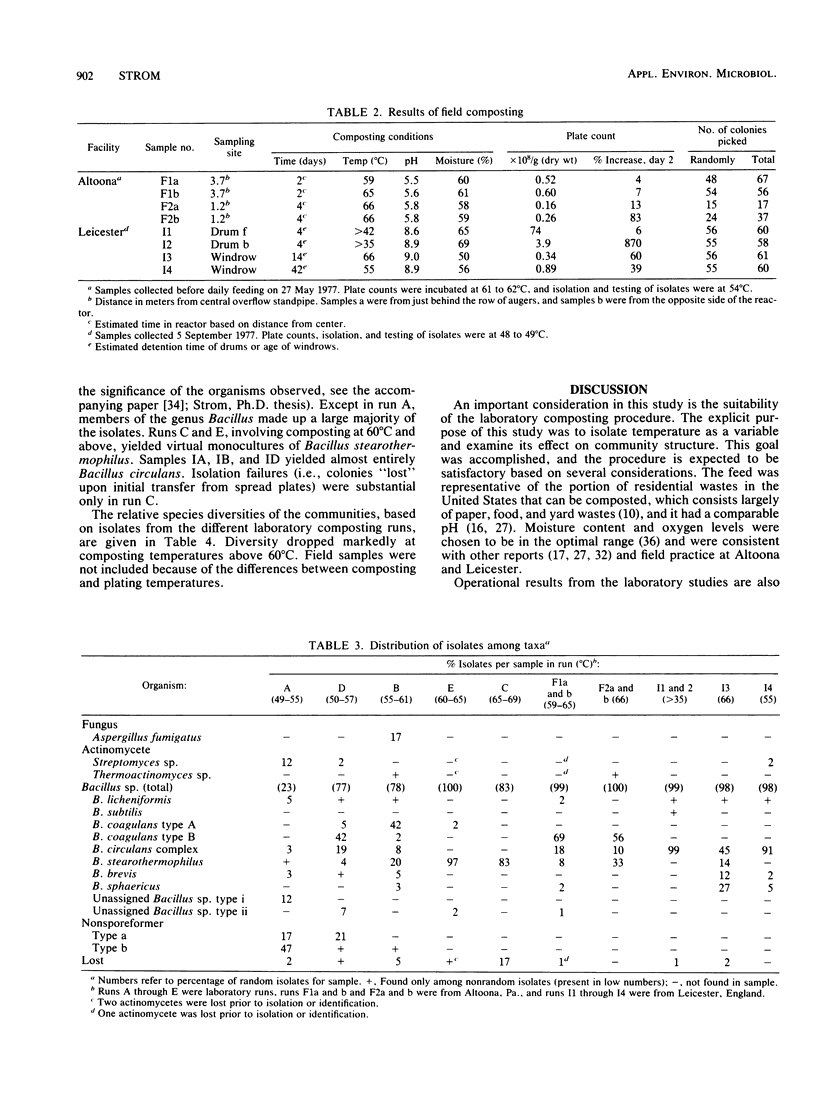
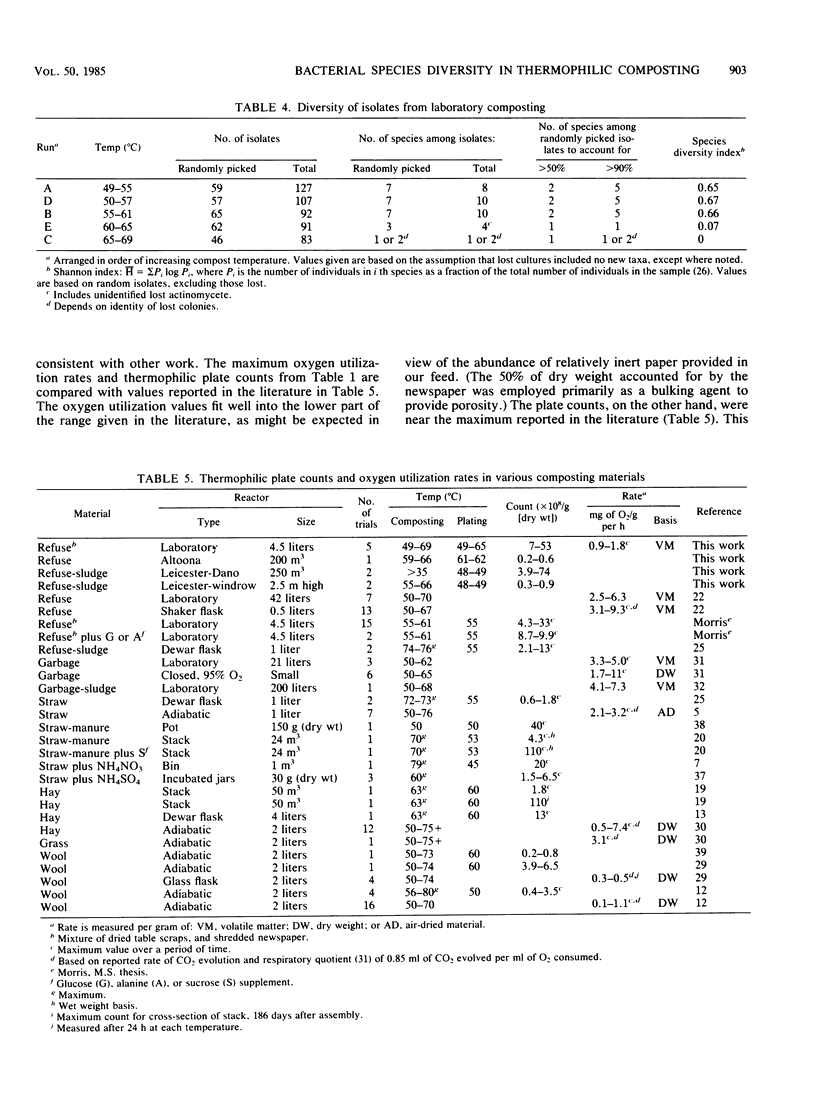
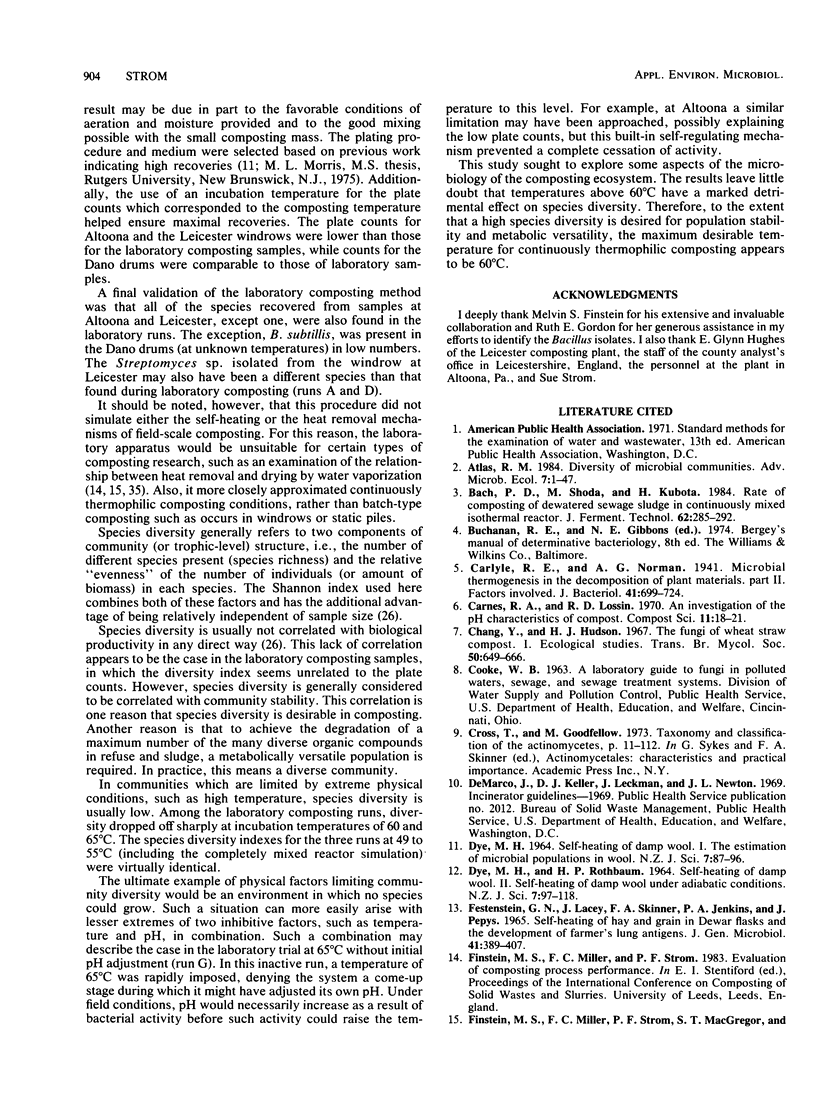
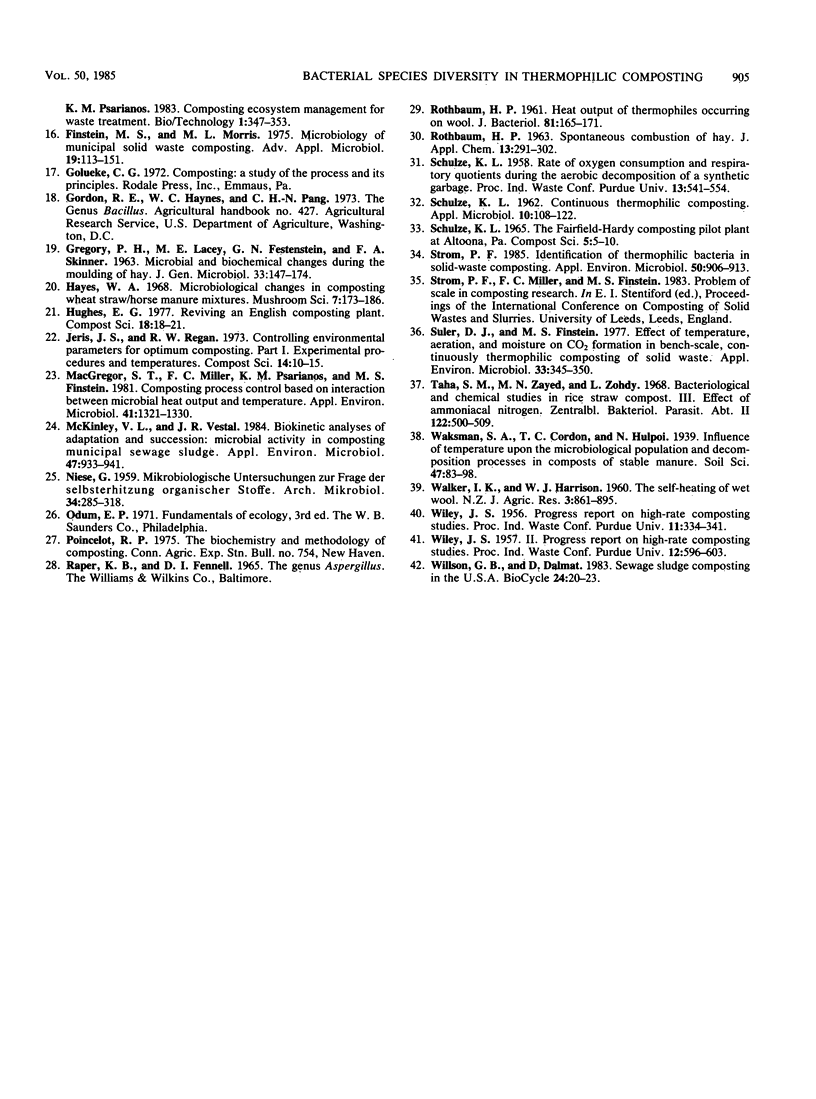
Selected References
These references are in PubMed. This may not be the complete list of references from this article.
- Carlyle R. E., Norman A. G. Microbial Thermogenesis in the Decomposition of Plant Materials: Part II. Factors Involved. J Bacteriol. 1941 Jun;41(6):699–724. doi: 10.1128/jb.41.6.699-724.1941. [DOI] [PMC free article] [PubMed] [Google Scholar]
- Cross T., Goodfellow M. Taxonomy and classification of the actinomycetes. Soc Appl Bacteriol Symp Ser. 1973 Jan;2:11–112. [PubMed] [Google Scholar]
- Festenstein G. N., Lacey J., Skinner F. A., Jenkins P. A., Pepys J. Self-heating of hay and grain in Dewar flasks and the development of farmer's lung antigens. J Gen Microbiol. 1965 Dec;41(3):389–407. doi: 10.1099/00221287-41-3-389. [DOI] [PubMed] [Google Scholar]
- Finstein M. S., Morris M. L. Microbiology of municipal solid waste composting. Adv Appl Microbiol. 1975;19:113–151. doi: 10.1016/s0065-2164(08)70427-1. [DOI] [PubMed] [Google Scholar]
- Macgregor S. T., Miller F. C., Psarianos K. M., Finstein M. S. Composting process control based on interaction between microbial heat output and temperature. Appl Environ Microbiol. 1981 Jun;41(6):1321–1330. doi: 10.1128/aem.41.6.1321-1330.1981. [DOI] [PMC free article] [PubMed] [Google Scholar]
- McKinley V. L., Vestal J. R. Biokinetic analyses of adaptation and succession: microbial activity in composting municipal sewage sludge. Appl Environ Microbiol. 1984 May;47(5):933–941. doi: 10.1128/aem.47.5.933-941.1984. [DOI] [PMC free article] [PubMed] [Google Scholar]
- NIESE G. [Microbiological studies on the problem of selfheating of organic substances]. Arch Mikrobiol. 1959;34:285–318. [PubMed] [Google Scholar]
- ROTHBAUM H. P. Heat output of thermophiles occurring on wool. J Bacteriol. 1961 Feb;81:165–171. doi: 10.1128/jb.81.2.165-171.1961. [DOI] [PMC free article] [PubMed] [Google Scholar]
- SCHULZE K. L. Continuous thermophilic composting. Appl Microbiol. 1962 Mar;10:108–122. doi: 10.1128/am.10.2.108-122.1962. [DOI] [PMC free article] [PubMed] [Google Scholar]
- Strom P. F. Identification of thermophilic bacteria in solid-waste composting. Appl Environ Microbiol. 1985 Oct;50(4):906–913. doi: 10.1128/aem.50.4.906-913.1985. [DOI] [PMC free article] [PubMed] [Google Scholar]
- Suler D. J., Finstein M. S. Effect of Temperature, Aeration, and Moisture on CO(2) Formation in Bench-Scale, Continuously Thermophilic Composting of Solid Waste. Appl Environ Microbiol. 1977 Feb;33(2):345–350. doi: 10.1128/aem.33.2.345-350.1977. [DOI] [PMC free article] [PubMed] [Google Scholar]
- Taha S. M., Zayed M. N., Zohdy L. Bacteriological and chemical studies in rice straw compost. 3. Effect of ammoniacal nitrogen. Zentralbl Bakteriol Parasitenkd Infektionskr Hyg. 1968;122(5):500–509. [PubMed] [Google Scholar]


